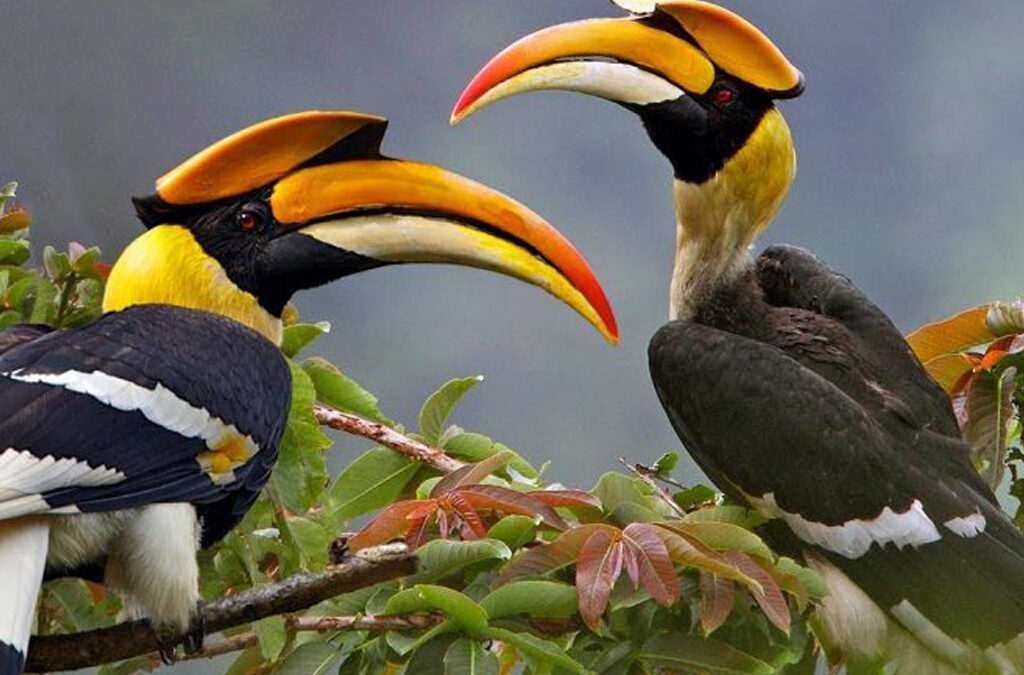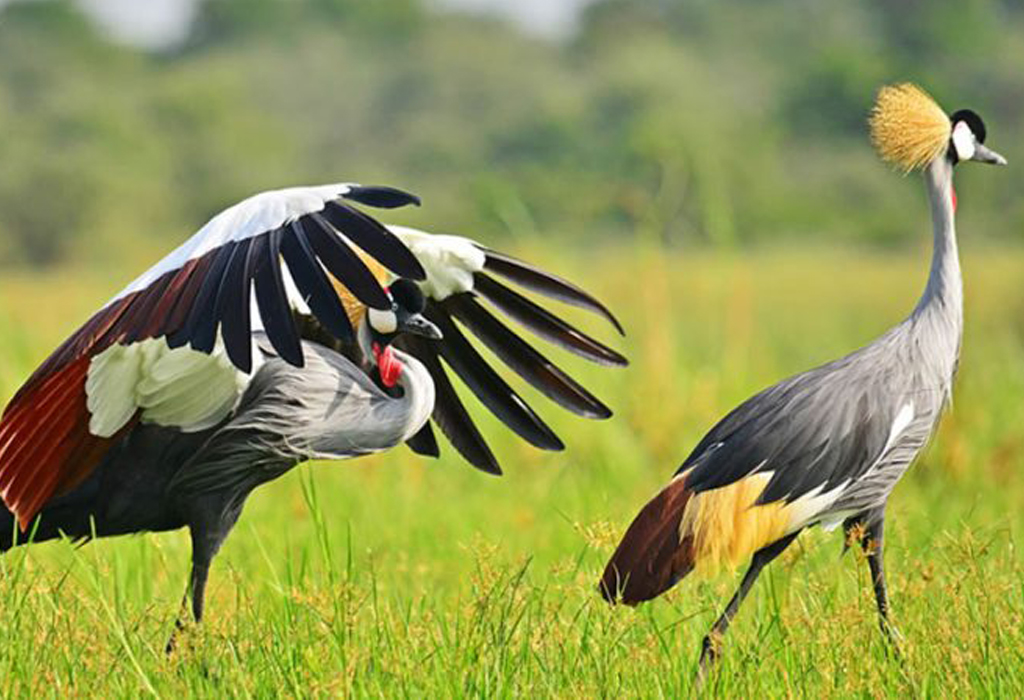- GET IN TOUCH WITH US:
- +256 753518160
- +256 777842166
- info@experiyatourcompany.com

What Should I Wear on a Game Drive Safari?
September 27, 2025
What’s the Difference Between Cheetahs and Leopards?
September 29, 2025Bird Watching Paradise in Uganda

Uganda has long been recognized as one of Africa’s most rewarding destinations for bird watching. The country’s nickname, the “Pearl of Africa,” extends beyond its diverse landscapes and rich wildlife; it is equally deserving because of its extraordinary birdlife. With more than 1,070 bird species recorded within its borders, Uganda ranks among the most bird-rich countries in the world. From wetlands and rainforests to savannahs and high-altitude mountains, Uganda offers an unmatched variety of ecosystems, each supporting its own unique bird species. For travelers who are passionate about birding, Uganda presents not just a safari, but an opportunity to immerse in a vibrant avian paradise.
Why Uganda is a Bird Watching Paradise
The sheer diversity of Uganda’s bird species makes it a dream destination for ornithologists and hobbyists alike. Unlike many countries where bird watching is seasonal, Uganda offers year-round opportunities thanks to its tropical climate. Every corner of the country reveals something special, from migratory flocks that arrive during the rainy months to endemic species that thrive in dense forests and papyrus swamps.
Uganda’s ecosystems play a central role in nurturing this incredible bird life. Its tropical rainforests, such as those in Kibale and Bwindi, shelter elusive forest dwellers. The expansive savannahs of Queen Elizabeth and Murchison Falls National Parks allow raptors, hornbills, and colorful bee-eaters to flourish. Wetlands like Mabamba Bay harbor water-loving species, including the iconic shoebill stork, while mountainous regions add yet another layer of biodiversity. This combination of landscapes makes Uganda one of the world’s most complete bird watching destinations.
Best Bird Watching Destinations in Uganda
Mabamba Bay Wetland
Mabamba Bay, located along the shores of Lake Victoria, has earned worldwide fame as one of the best places to spot the shoebill stork. Bird watchers glide through papyrus swamps in small boats, scanning the waterways for this prehistoric-looking bird. The shoebill is often considered the “holy grail” of African bird watching, and Mabamba Bay provides one of the most reliable sightings. Besides the shoebill, visitors also encounter saddle-billed storks, swamp flycatchers, and numerous species of herons and egrets. The wetland’s tranquility, coupled with its rich bird life, makes it an unmissable stop for any birding itinerary.
Kibale National Park
Although Kibale is often celebrated for its chimpanzees, it is also a premier bird watching site. The forest shelters over 300 bird species, including rare and sought-after species like the African green broadbill, found only in a few pockets of East Africa. The forest canopy resonates with calls of turacos, hornbills, and cuckoos. As visitors walk along forest trails, they may spot the great blue turaco, a bird admired not only for its size but also for its dazzling plumage. Kibale’s dense and ancient forests reward patient birders with some of the most remarkable sightings in Uganda.
Bwindi Impenetrable National Park
Bwindi is world-renowned for its mountain gorillas, yet it is equally a treasure trove for bird watchers. More than 350 bird species thrive here, including 23 that are endemic to the Albertine Rift. Among these, the mountain ashy flycatcher and the Shelley’s crimsonwing are rare gems that birders travel far to see. The forest’s mix of altitude and vegetation provides niches for different species, creating a birding experience that rivals gorilla trekking in excitement. Walking through Bwindi’s misty trails, one can listen to a chorus of bird calls echoing through the dense vegetation, an experience both serene and thrilling.

Queen Elizabeth National Park
Queen Elizabeth National Park boasts the highest recorded number of bird species of any protected area in East Africa, with over 600 on record. The park’s diverse habitats—savannah, forest, wetlands, and crater lakes—make it a haven for birders. Along the Kazinga Channel, boat trips reveal African fish eagles, pied kingfishers, and large flocks of pelicans. The Maramagambo Forest inside the park shelters forest specialists such as the white-naped pigeon and the black bee-eater. With such diversity packed into one park, Queen Elizabeth remains a highlight for bird watchers seeking variety in a single destination.
Lake Mburo National Park
Lake Mburo may be smaller compared to other Ugandan parks, but it offers a unique blend of savannah and wetland species. More than 350 bird species thrive here, making it a rewarding stop for bird enthusiasts. Among the highlights are the papyrus gonolek, the African finfoot, and the white-winged tit. Birders exploring the shores of Lake Mburo can also spot African fish eagles swooping over the water or colorful sunbirds darting through the acacia trees. The park’s accessibility and compact size allow bird watchers to cover diverse habitats in a short amount of time.
Semuliki National Park
Tucked away in western Uganda, Semuliki National Park remains one of the country’s lesser-known birding destinations. However, it is a hidden gem for those seeking rare species. Over 400 birds are recorded here, many of them Central African forest specialists that barely cross into Uganda. Birders can find the yellow-throated nicator, the black-capped apalis, and the piping hornbill within its lowland rainforest. Semuliki’s remote atmosphere makes bird watching here feel like a true wilderness adventure.
Top Birds to See in Uganda
While Uganda’s bird list is extensive, several standout species captivate birders from around the world. The shoebill stork, with its massive, shoe-shaped bill and prehistoric look, remains the most sought-after bird. The great blue turaco, often described as one of Africa’s most beautiful birds, enchants with its striking colors and graceful movements. The African green broadbill, rare and highly localized, rewards those who venture deep into Kibale’s rainforests. On the savannah, the red-chested sunbird dazzles with its vibrant plumage, while the African fish eagle dominates the skies with its powerful calls. Each of these birds contributes to Uganda’s reputation as a bird watcher’s paradise.
Best Time for Bird Watching in Uganda
Uganda offers excellent birding opportunities throughout the year, but timing can enhance the experience. The rainy seasons, which occur from March to May and September to November, bring migratory species from Europe and Asia. During these months, birders enjoy an even wider variety of sightings as the skies and forests fill with seasonal visitors. On the other hand, the dry seasons from June to August and December to February provide clearer conditions for spotting resident species. Trails are also easier to navigate, and wildlife viewing in general is more straightforward. Whether visitors come during the wet or dry season, they can expect rewarding encounters with Uganda’s bird life.
Conclusion: Experience Uganda’s Birding with Experts
Bird watching in Uganda is more than an activity; it is an immersive journey into one of the richest avian landscapes in the world. From wetlands alive with storks and herons to forests echoing with the songs of turacos and flycatchers, every moment brings a new discovery. Uganda’s diverse habitats, reliable sightings, and year-round opportunities make it an unmatched destination for bird enthusiasts of all levels. To make the most of this paradise, travelers benefit from experienced guides who understand the behavior and habitats of different species. With Experiya Tour Company, visitors can explore Uganda’s prime birding sites with ease, gaining both knowledge and unforgettable memories. Whether it is the thrill of spotting a shoebill in Mabamba or the joy of hearing a sunbird’s song in Queen Elizabeth National Park, Uganda promises bird watching adventures that will stay with you for a lifetime.



